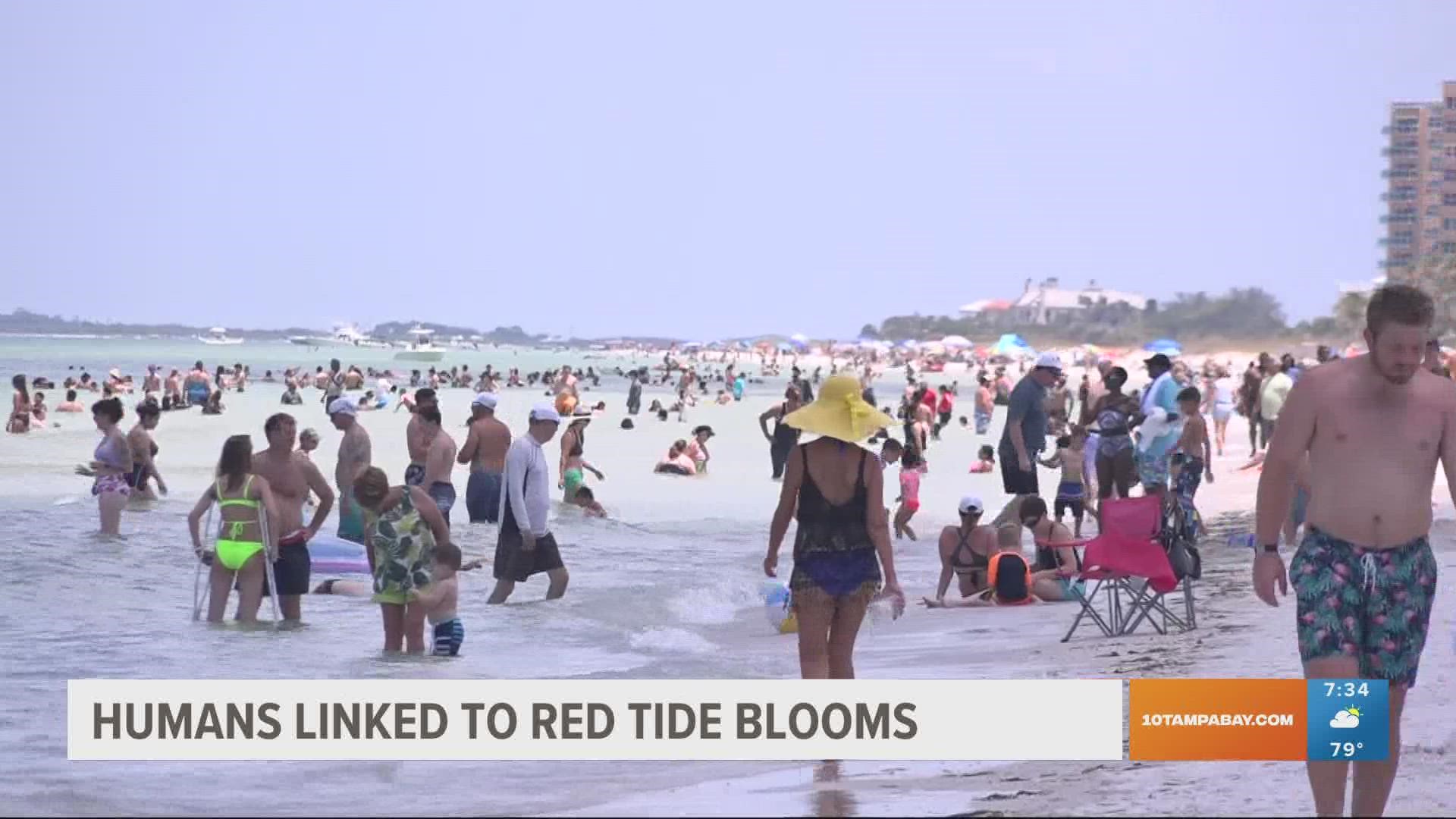TAMPA, Fla. — After Hurricane Ian blew through Florida last week, photos of "shedding" rainwater have gone viral on the internet — but even with it being cool, it poses a possible threat.
The amount of rain from Ian pushed rivers past their limits which is now slowly dissipating over time. The view from space shows much of that flooding rainfall making its way back to the Gulf of Mexico.
But what exactly does the rainwater have to do with the red tide? Well, according to 10 Tampa Bay's Chief Meteorologist Bobby Deskins, the water that is "shedding" contains not only possible toxins like oil, gas and sewerage — but it's also packed with nutrients.
Once the nutrients from the abundance of water hit the Gulf, it basically acts like a fertilizer for Karenia Brevis, also known as red tide, according to the Climate Adaption Center.
The nonprofit explains it only takes about two weeks after a big flush until stations begin to measure higher counts of the red tide because of the organisms going through a "population explosion."
With the most recent test for red tide done mid-September, Deskins says it'll be interesting to see what comes in the next couple of months following after Ian.
While nothing is certain — it could possibly feed red tide.

